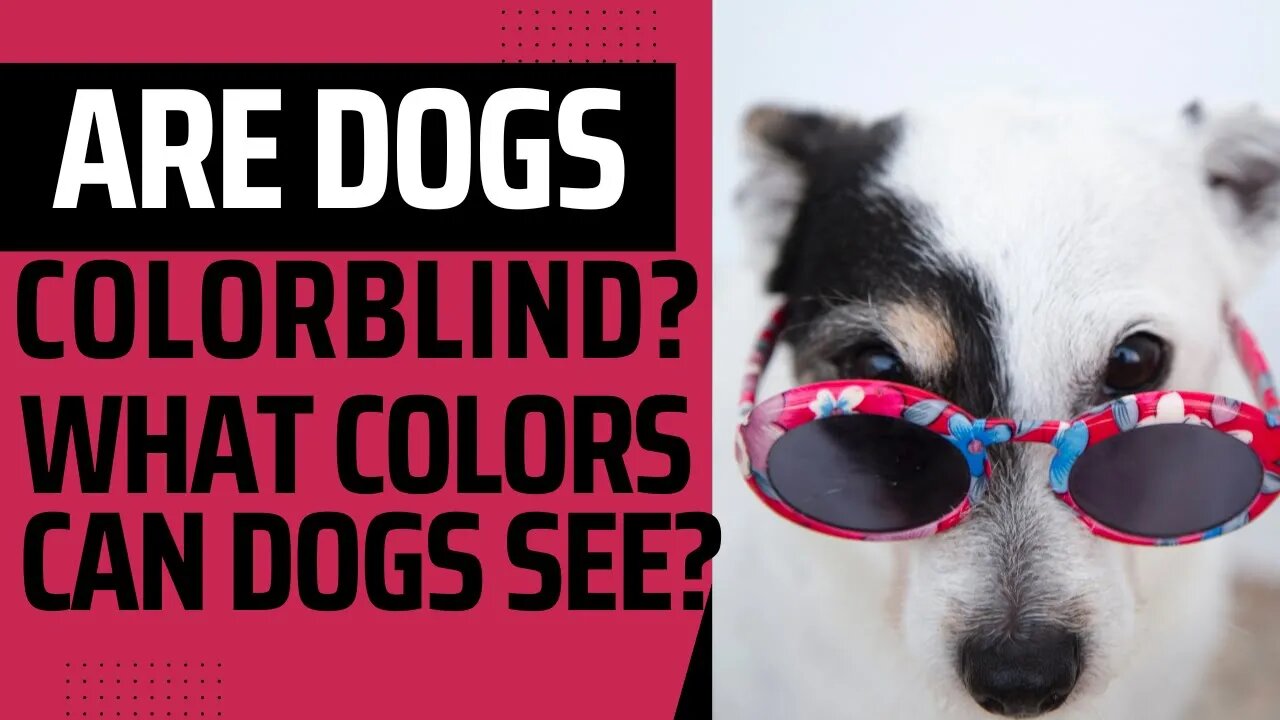Premium Only Content

Are Dogs Colorblind?
To buy "Facts about Animals" a coffee: https://www.buymeacoffee.com/AnimalsandFacts
To become our contributor: https://www.buymeacoffee.com/AnimalsandFacts/wishlist
Today I will talk about dog vision and we will look for the answer to the question what colors do our furry friends see?
So, Are Dogs Colorblind?
Unless they have some sort of birth defect, or disease, or have experienced trauma that affects their sight, dogs have excellent vision.
But just because they can see well doesn't mean they can see all the same colors that humans can see.
Many people think dogs can only see black and white, but that simply isn't true.
What Is Color Blindness?
Color blindness is also known as a color deficiency because someone with color blindness cannot see colors normally.
Color blindness is not the same as achromatopsia, where only black, white,
and shades of gray can be seen.
In order to see colors normally, at least three types of special photoreceptors in the eye, called cones, need to be present.
When light is reflected off an object,
it enters the eye and hits different types of tiny photoreceptors which then transmits a signal to the brain to tell us what color we see.
In color blindness, however, some of these types of photoreceptors are missing or don't work properly.
This means that some colors are not properly seen and that individual is color blind.
What Colors Can Dogs See?
Humans usually have three types of cones—the part of the eye that allows seeing colors.
But unlike humans, dogs only have two types of cones.
This means that humans have the ability to see a greater variety and more vibrant colors than dogs.
But dogs don't just see in black, white, and gray.
The two types of cones that dogs do have to enable them to see shades of yellow, blue, and brown alongside black, white, and gray.
These cones don't allow them to see shades of red or green though, so a dog instead sees red and green colors as shades of brown or gray.
Because dogs don't see red and green colors, opt for shades of yellow and blue when choosing a toy for your dog.
These colors can be seen as their true shades, so they are much more appealing to your dog.
This is one reason why yellow tennis balls are so popular among dogs, even though dogs don't see them as brightly as humans.
Night Vision.
Although cones may be important for seeing colors and details, other parts of your dog's eyes play different roles in their vision.
Rods are another type of receptor that is found in your dog's retinas and are much more prevalent than cones1.
Rods are responsible for perceiving brightness, so they determine how well a dog can see at night.
They also help a dog determine the size and shape of objects and how good their peripheral vision is.
Because dogs have so many more rods than cones in their eyes, their night vision is much stronger than their ability to see colors.
In addition to the rods and cones that are found in the retina, the tapetum lucidum is a part of the eye that is found behind the retina.
It helps reflect any light that enters the eye and further enhances a dog's night vision.
Humans do not have a tapetum lucidum, but many other animals like ferrets, cats, and even fish do.
Visual Acuity.
Dogs may have great night vision, but they don't have perfect eyesight when compared to humans.
The typical visual acuity of a dog is 20/75 compared to 20/20, which is the normal visual acuity of humans.
This means that if a person could identify details of an object from 75 feet away, a dog would need to be 20 feet away to start to see the same details.
With all these factors taken into account, you may think that your eyes are superior to your canine friend's since you have better visual acuity and can see more colors,
but that is not the case.
Their eyes are simply different than ours and what dogs lack from their daytime visual abilities, they more than make up for their excellent night vision.
So, now you know a little more about dog vision.
If you like our videos and find them useful and interesting, now you have the opportunity to thank us for our work by buying us one or more cups of coffee using the link in the description of this video or the link in the channel header.
We thank you for watching this video and don't forget to subscribe to our channel for more interesting animal facts.
-
 39:40
39:40
PMG
15 hours ago $10.07 earned"Paulo Figueiredo, Mehek Cooke, Ashley Hayek, Mark Mitchell- The Breanna Morello Show"
50.3K4 -
 3:37:41
3:37:41
Fresh and Fit
8 hours agoGirls React To Lily Philips Sleeping With 100 Guys
137K61 -
 27:00
27:00
Stephen Gardner
10 hours ago🔥McConnell ATTACKS Trump | HUGE Update on MILITARY DRONES mission!!
115K149 -
 8:10:03
8:10:03
Dr Disrespect
19 hours ago🔴LIVE - DR DISRESPECT - WARZONE - HUNTING SEASON
263K77 -
 1:32:28
1:32:28
Fresh and Fit
12 hours agoHow To Wholesale and Fix & Flip Real Estate!
75.7K11 -
 1:30:55
1:30:55
Flyover Conservatives
1 day agoDrones, Darkness, and Divine Intervention: Unpacking Prophecy and Reality - Dr. Troy Spurrill | FOC Show
47.6K2 -
 59:32
59:32
The StoneZONE with Roger Stone
10 hours agoHonoring Great American Patriots for Helping to Save our Country | The StoneZONE w/ Roger Stone
98.1K8 -
 1:09:50
1:09:50
Donald Trump Jr.
15 hours agoHow Sean Parnell Helped Deliver PA, Plus Why Pete Hegseth Must Be Confirmed | TRIGGERED Ep.199
221K94 -
 1:58:03
1:58:03
Tucker Carlson
12 hours agoJeffrey Sachs: The Inevitable War With Iran, and Biden’s Attempts to Sabotage Trump
224K389 -
 1:31:00
1:31:00
Redacted News
15 hours agoBREAKING! Trump demands answers on UFOs over America as Pentagon hides the truth | Redacted News
214K368